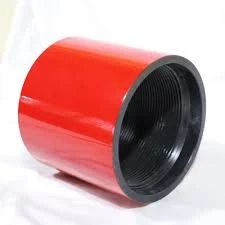- Afrikaans
- Albanian
- Amharic
- Arabic
- Armenian
- Azerbaijani
- Basque
- Belarusian
- Bengali
- Bosnian
- Bulgarian
- Catalan
- Cebuano
- Corsican
- Croatian
- Czech
- Danish
- Dutch
- English
- Esperanto
- Estonian
- Finnish
- French
- Frisian
- Galician
- Georgian
- German
- Greek
- Gujarati
- Haitian Creole
- hausa
- hawaiian
- Hebrew
- Hindi
- Miao
- Hungarian
- Icelandic
- igbo
- Indonesian
- irish
- Italian
- Japanese
- Javanese
- Kannada
- kazakh
- Khmer
- Rwandese
- Korean
- Kurdish
- Kyrgyz
- Lao
- Latin
- Latvian
- Lithuanian
- Luxembourgish
- Macedonian
- Malgashi
- Malay
- Malayalam
- Maltese
- Maori
- Marathi
- Mongolian
- Myanmar
- Nepali
- Norwegian
- Norwegian
- Occitan
- Pashto
- Persian
- Polish
- Portuguese
- Punjabi
- Romanian
- Russian
- Samoan
- Scottish Gaelic
- Serbian
- Sesotho
- Shona
- Sindhi
- Sinhala
- Slovak
- Slovenian
- Somali
- Spanish
- Sundanese
- Swahili
- Swedish
- Tagalog
- Tajik
- Tamil
- Tatar
- Telugu
- Thai
- Turkish
- Turkmen
- Ukrainian
- Urdu
- Uighur
- Uzbek
- Vietnamese
- Welsh
- Bantu
- Yiddish
- Yoruba
- Zulu
Understanding Casing Pup Joints in Oil and Gas Industry Applications and Benefits
Understanding Casing Pup Joints Essential Components in Oil and Gas Operations
In the oil and gas industry, the effectiveness of drilling operations hinges on various components that come together to ensure safety, reliability, and efficiency. Among these components, casing pup joints play a critical role. This article aims to delve into the significance of casing pup joints, their construction, applications, and the key considerations when selecting them for drilling operations.
What is a Casing Pup Joint?
A casing pup joint is a short length of pipe used to connect two larger sections of casing or to provide a means of adjusting the length of the casing string during installation. These joints are typically manufactured from high-strength steel and are designed to withstand extreme pressures and harsh environments encountered in downhole applications. While they are relatively brief in length, usually ranging from 2 to 10 feet, their impact on the integrity of the wellbore is profound.
Purpose and Applications
Casing pup joints serve several essential purposes in oil and gas drilling operations
1. Adjustment of Casing Depth One of the most common uses of pup joints is to allow flexibility in the casing depth. When specific wellbore conditions require an adjustment to the casing length, pup joints make this process seamless.
2. Facilitate Connection Pup joints can act as a connecting piece when standard length casing sections do not fit perfectly due to variations in wellbore depth or diameter. They provide a reliable connection that maintains the integrity of the casing string.
3. Enhancing Performance By using pup joints, operators can customize the casing assembly to better suit the conditions of the well. This customization helps enhance performance by ensuring that the casing string can handle the appropriate loads and pressures.
4. Pressure Management In high-pressure applications, pup joints are crucial in maintaining the necessary pressure balance within the well. They help ensure that the casing string can withstand the rigors of the downhole environment without failure.
casing pup joint

Specifications and Material Considerations
When selecting casing pup joints, several specifications and material considerations must be taken into account
- Material Grade Casing pup joints are typically made from various grades of steel, including carbon steel and alloy steel, which are designed to meet specific pressure and temperature requirements. The choice of material affects the joint's strength and corrosion resistance.
- Diameter and Wall Thickness The diameter and wall thickness of pup joints should be compatible with the existing casing string. Thickness must be sufficient to withstand expected downhole pressures without compromising structural integrity.
- Coupling Types Different types of couplings are available for pup joints, including butt welds, threaded couplings, and flanged connections. The appropriate coupling type depends on the intended application and operational requirements.
Challenges in Casing Pup Joint Use
While casing pup joints are invaluable in drilling operations, there are challenges associated with their use. Rigorous inspections and maintenance are necessary to ensure the joints remain intact and effective. Corrosion, mechanical wear, and the potential for improper installation can compromise the performance of casing pup joints.
Conclusion
Casing pup joints are an essential component in the complex machinery of oil and gas drilling operations. Their ability to facilitate depth adjustment, enhance operational performance, and withstand challenging downhole conditions makes them invaluable. However, careful selection based on material specifications, sizes, and connecting mechanisms is crucial for ensuring the safety and efficiency of well operations. By understanding the vital role of casing pup joints, operators can optimize their drilling strategies and contribute to successful exploration and production efforts in the oil and gas sector.
-
Well Casing Extension Couplings – Applications and InstallationNewsJun.06,2025
-
Types of Crossover Subs in Drilling & CompletionNewsJun.06,2025
-
Key Features of High-Quality Tubing Pup JointsNewsJun.06,2025
-
Installation and Maintenance Tips for Steel Couplings for PipeNewsJun.06,2025
-
How to Select the Right Pup Joint for Oil & Gas OperationsNewsJun.06,2025
-
Applications of Stainless Steel Pipe CouplingsNewsJun.06,2025







